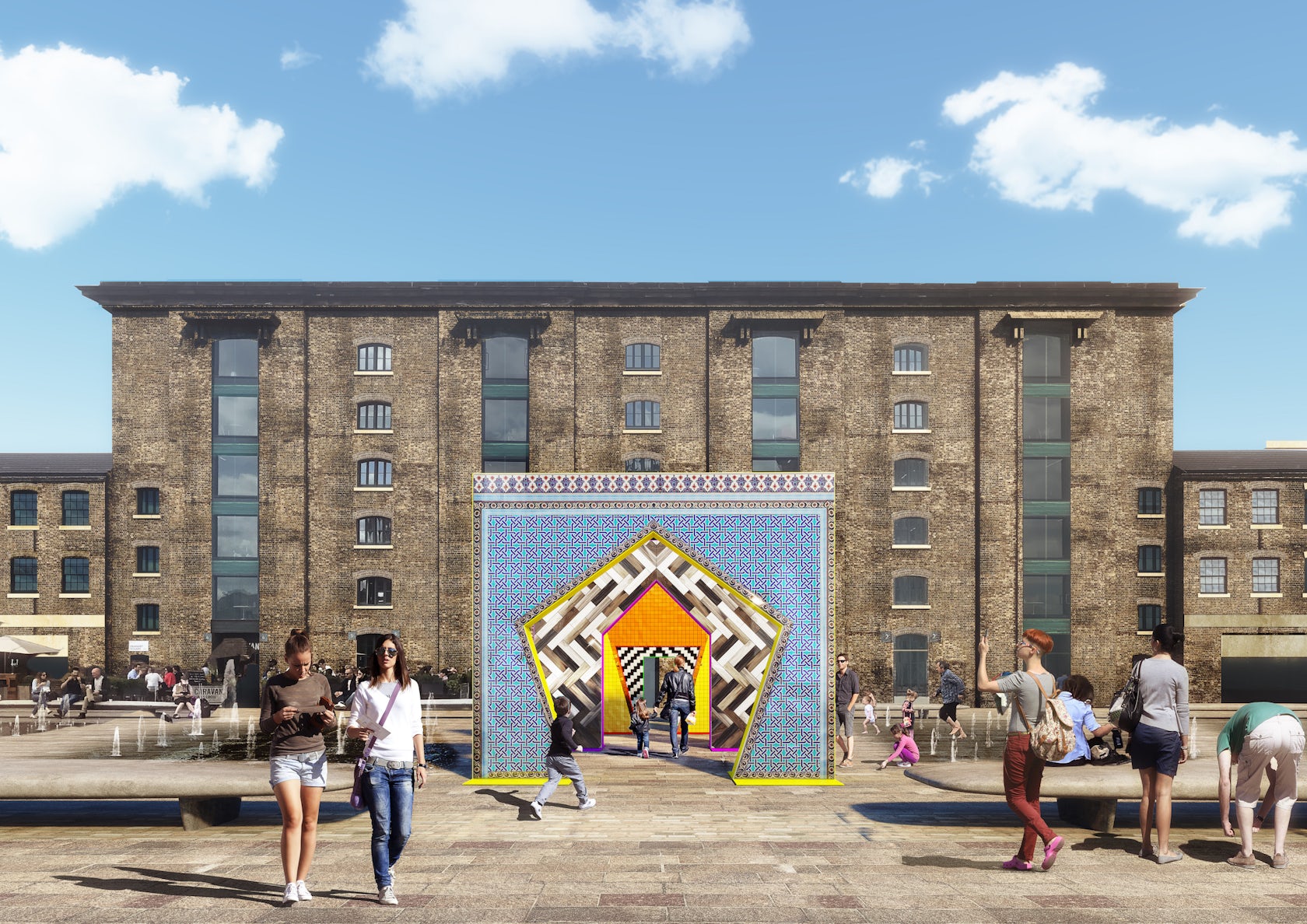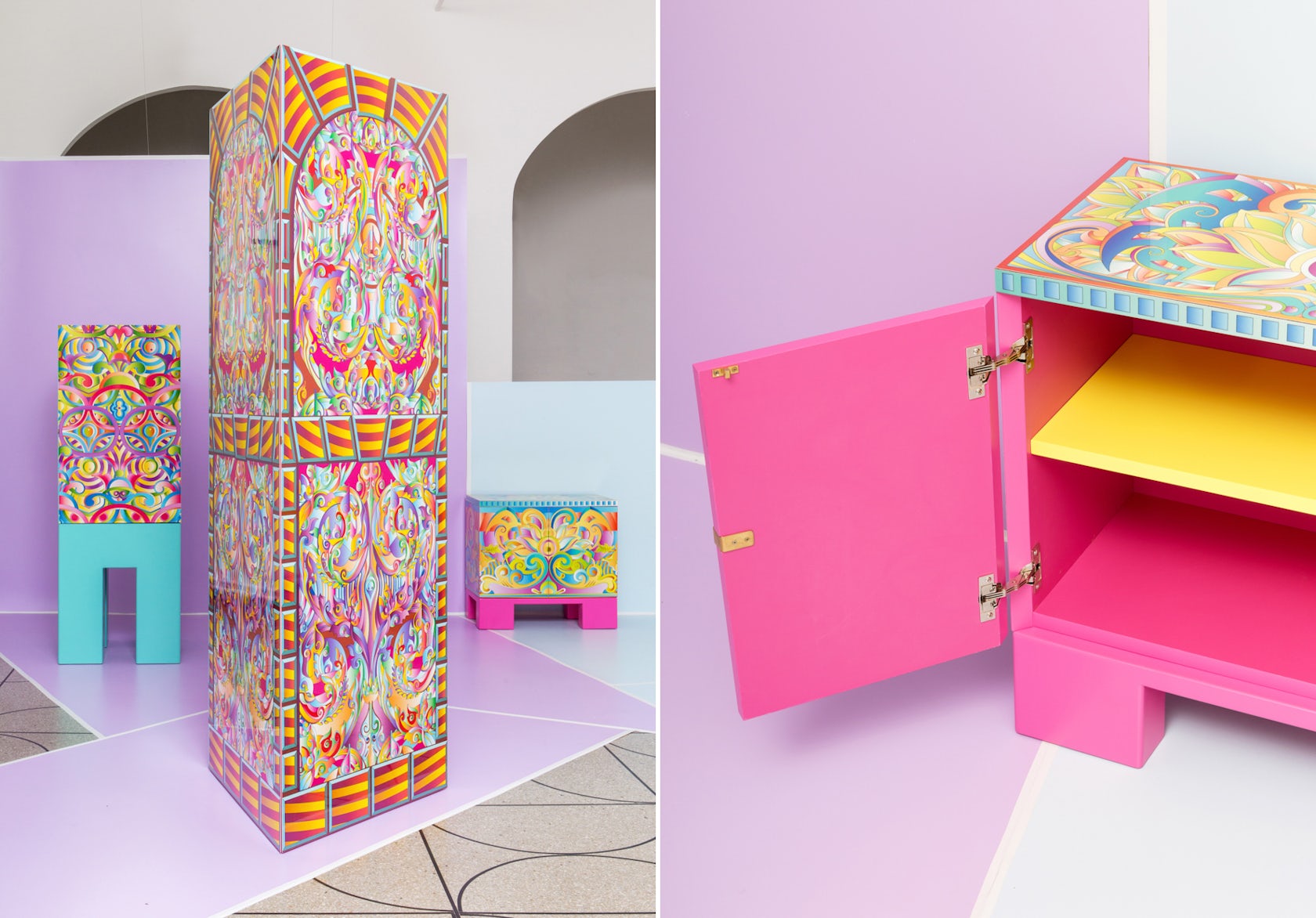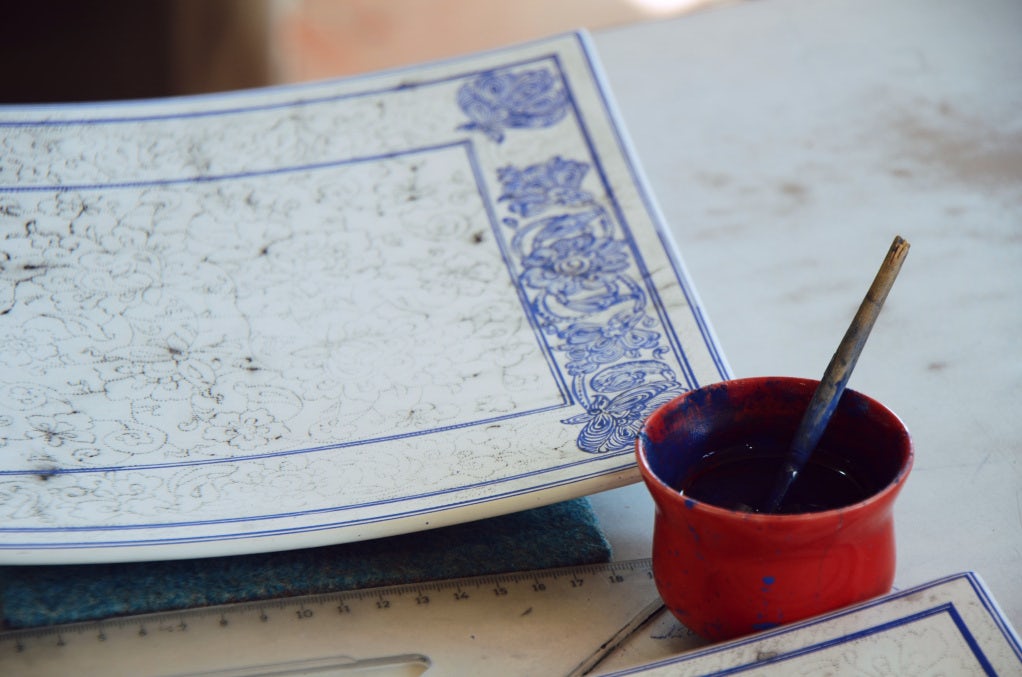Looking to clad your next project in ceramic tile? Search for the perfect cladding panels on Source, Architizer’s new community marketplace for building-products. Click here to see if you qualify. It’s free for architects.
Some materials are so frequently applied in one area that designers forget they can do a lot more. Ceramic tile is so standard for wet areas, like bathroom walls and kitchen backsplashes, that it’s easy to overlook their centuries-long history as an exterior cladding material. The Gateways installation by artist Adam Nathaniel Furman, featured at the upcoming 2017 designjunction festival in London, celebrates Turkish ceramic tiles by covering a series of portals in the colorful material.
“Gateways brings together … the monumental and the quotidian,” Furman says, “celebrating the everyday tile and how delightful it can be when we look at it again, in a new environment, framed differently, with fresh eyes.”
The temporary structure can be visited from September 21 through 24 in London’s Granary Square next to famed art and design school Central Saint Martins.

Gateways by Adam Nathaniel Furman; image courtesy designjunction
For the installation, Turkishceramics, a promotional group representing over 30 ceramic manufacturers and exporters in Turkey, invited Furman to work with their products in a way that would engage and surprise the public. Furman, a young architectural designer and artist getting lots of attention on the London scene, has previously created multicolored furniture and installations that play with monumentality and ornament in a slightly psychedelic postmodern manner that looks less Robert Stern and more Monty Python.

“4 Characters in the First Act,” a collection of furniture pieces by Adam Nathaniel Furman; photos by Federico Floriani
For this installation, he designed four grand portals that align to create a layered image when viewed on an axis. “I wanted to take these tiles we know so well and give them a monumental setting,” Furman said. Each gateway is clad in tile created specifically for this project. Their festive colors and patterns playfully clash with each other in a way that’s in keeping with Furman’s earlier kaleidoscopic work.

Gateways by Adam Nathaniel Furman; image courtesy designjunction
Inspiration for the gateway designs came from tile’s rich history as a celebratory cladding material — from the Ishtar Gates of Babylon to the gothic terra-cotta of the soaring Woolworth building in New York, according to Furman. “Ceramics have always been, and continue to be, both the most historic, resonant and traditional as well as the most fresh, perpetually surprising, delightful and exciting of architectural materials,” he says. “There is no other architectural treatment that has remained as fresh, relevant and cool as ceramics has from a thousand years B.C. right through into the 21st century.”

Hand-painted Iznik tile; image via Savor Istanbul
Ceramics have a rich history in Asia Minor, a legacy Furman drew on in his gates. One portal is clad in tile supplied by the Iznik Foundation. The Foundation trains artisans to produce and decorate tiles using centuries-old techniques, maintaining local history and adapting it to contemporary demand. The history of the hand-painted designs is balanced by the advanced technology of other digitally printed tiles. These products used Sinterflex technology that is capable of creating large-scale extremely thin tiles in curved or unusual shapes.

Large, thin Sinterflex tiles from Kale
Overall, the designjunction festival is meant to create a forum for designers and brands to exchange ideas and display their newest products. Featuring manufacturers from around the world, the festival organizes talks and exhibitions as part of the annual London Design Festival. Gateways will be available for viewing as part of the festival, ready to inspire designers to use ceramic tile for whatever use they can think up.
This article was researched by Sydney Franklin.
Find the perfect ceramic tile cladding panels on Source, the definitive network marketplace for building products. Click here for more information on the platform.




